|
|
| Разместил (Author): |
SergUA6  |
| Авторские права |
© http://www.radioscanner.ru |
|
|
Текст
|
SA update to version 6.1.0.3
In version 6.1.0.3 we continue to expand possibilities of SA OFDM module.
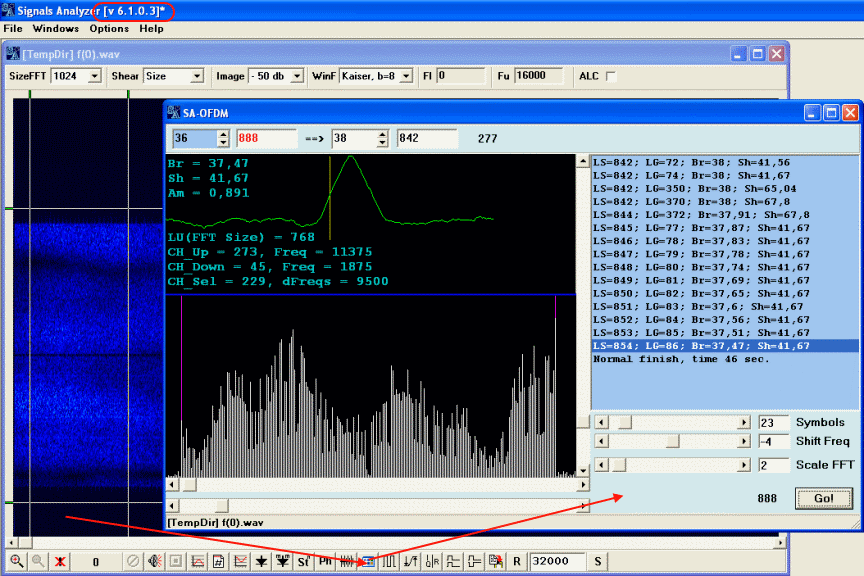
New components are added in the module(new components are selected with red color), old ones are moved to more convenient positions. The general view of the module:
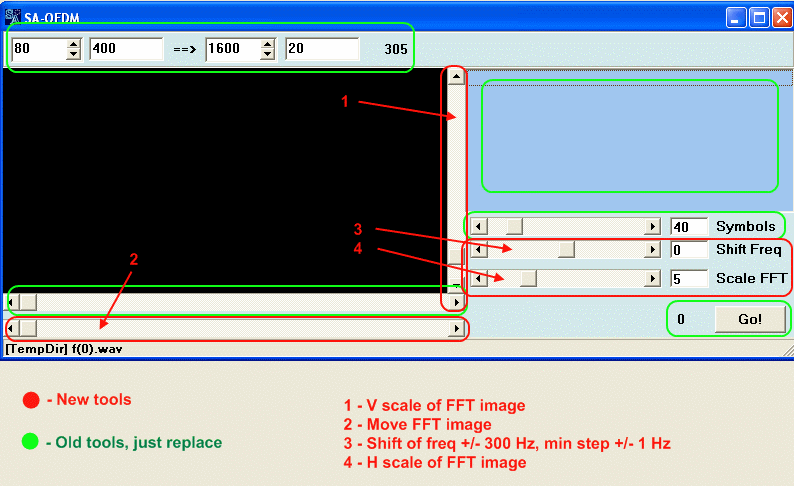
Description of the new elements:
1 - regulation of FFT image scale by vertical
2 - moving of FFT image
3 - shift/displacement of the whole signal, for the fast correction of inaccurate position of the signal on frequency. Accuracy is in 1 hrz.
4 - regulation of FFT image scale by horizontal. The regulation is discrete.
Other elements are same as in previous version.
More detailed:
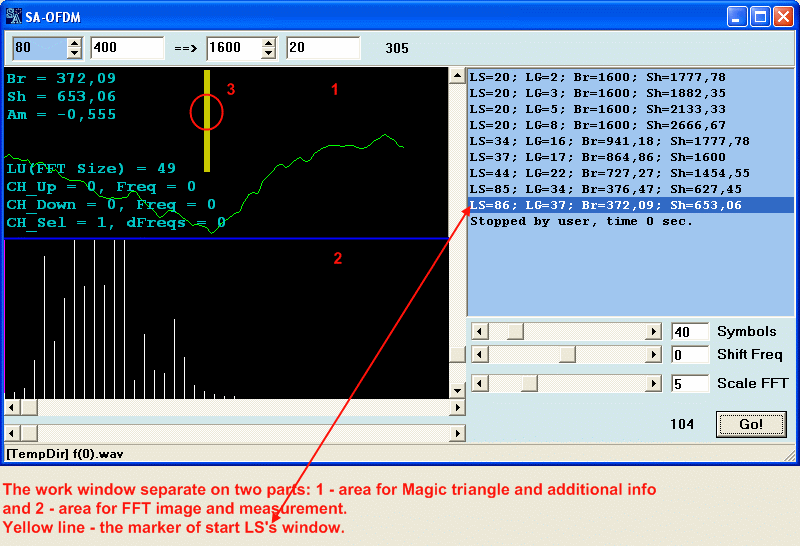
The working window is divided into two parts.
Top part: is intended for output of the image of a correlative triangle and the various additional information. It is also used for exact positioning of the signal's LS concerning to the marker (the yellow line in the middle).
Bottom part: for output of image of FFT spectrum.
Let's consider the common example of operation with the new elements of OFDM module.
Let’s take an already known signal DRM from our site. As we already know, clock frequency of manipulation is about 37 Hertz, thus it is possible to reduce strongly time of calculations, by having installed lower limit of speed at search of LS and LG at 36-37 a Hertz, and upper limit at 38-39.
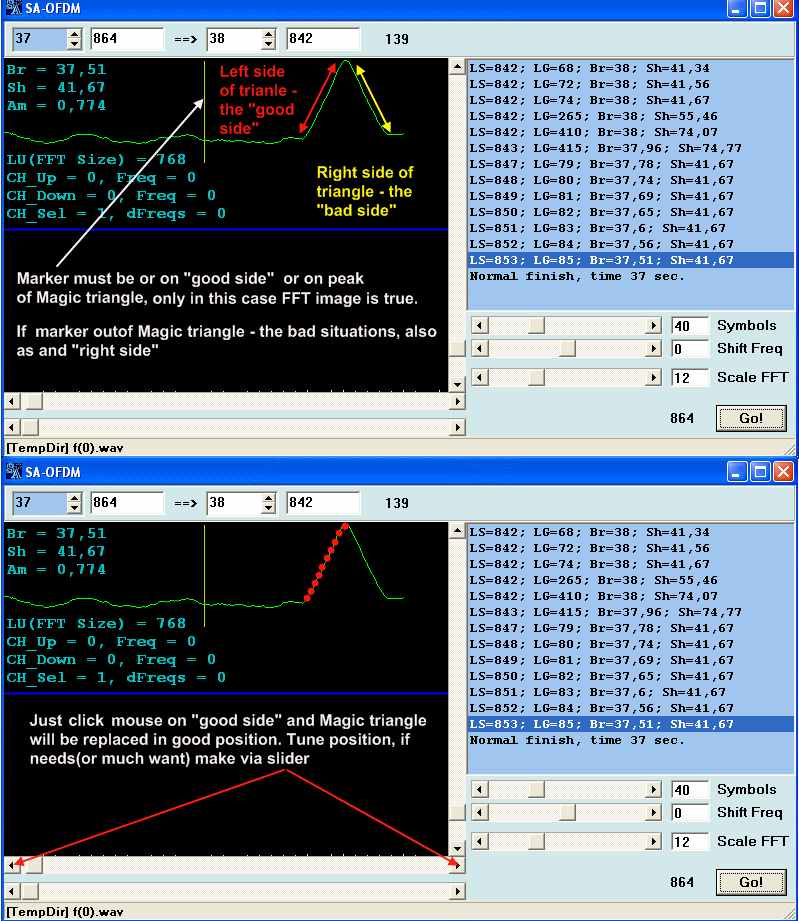
"The magic triangle" has two sides, left is the "good one", right is the "bad one" (an explanation of this feature will be described in the OFDM module tutorial part II).
Here we consider the common approaches.
For this purpose that Operation FFT would be spent really over "correct" LU, it is necessary to locate the signal so, that the marker would be situated or on "the good" side or exactly on the peak.
Actually, it is better to locate the signal on the middle of the good side.
For exact positioning of the signal concerning to marker, it is simply necessary to click on point of a slope of the triangle, and the signal automatically will be taken up into needed position. For position specification, it is possible to do smaller steps in hand-held, through the left and right buttons of the slider of moving on a signal.
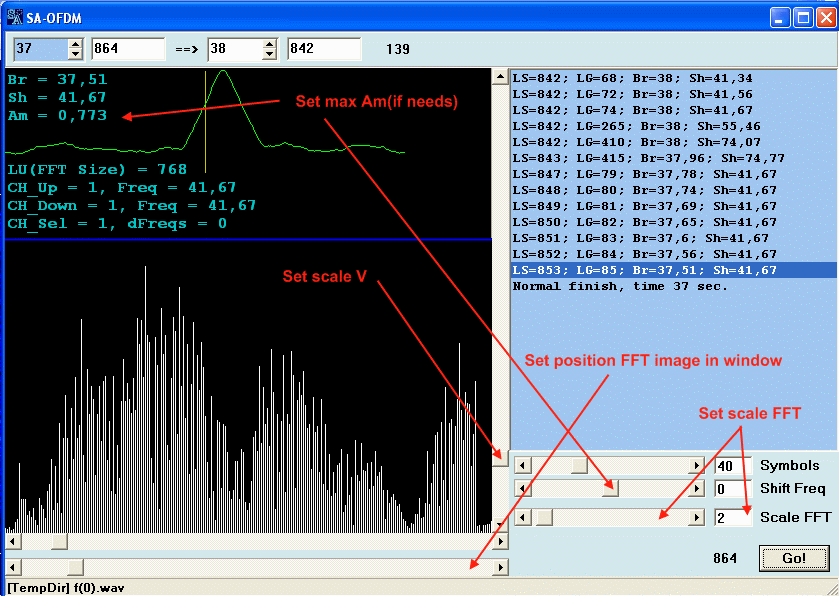
After the signal will be exposed in the necessary:
to regulate view of FFT image,
to correct signal's shift by maximum of the triangle's peak
and, in general, to estimate that purely it has turned out.
The main purpose of all these operations is to receive FFT picture of representation LU of a part of the symbol, this part is pure information itself. Moving on the signal symbol-by-symbol, we can learn a lot of interesting and useful information. For example:
how many frequencies are used in the concrete symbol,
how many of them are used in general
and others undetectable before/earlier things.
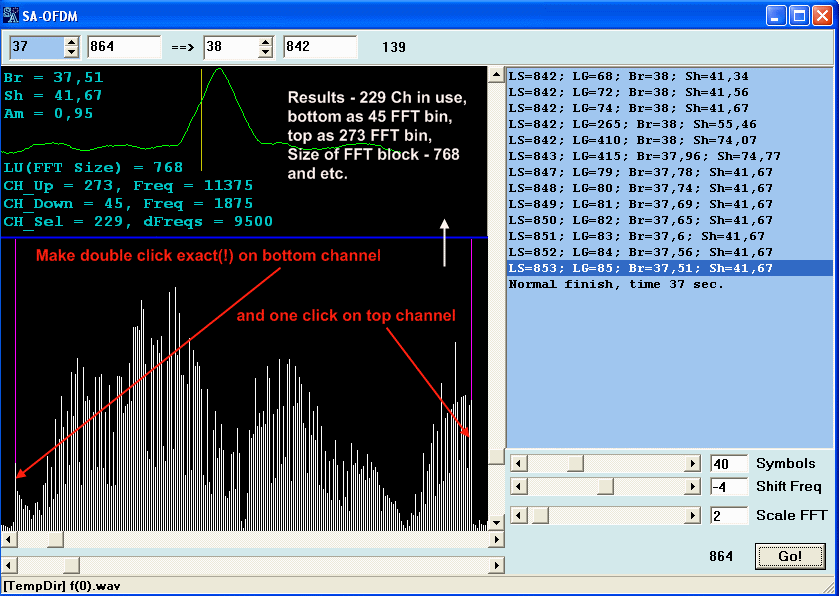
For example, on this signal to learn: how many channels are used, we need to count them in hand-held, or to use special markers to count them. If precisely to take place on the most left frequency of FFT image, and to make double cliques, this frequency will be marked by two (cliques double) markers; now, if to click precisely on the most right frequency, one of markers "will go" into it.
In the window of correlative triangle it is possible to read, how many frequencies are between the markers, what are the frequencies for the lower channel and for the upper one, what common spectrum is occupied with working channels and etc.
Concerning to this signal as result we have :
in total, there are 299 working channels
there are three, from them, which are located exactly on centre are not used( it is visible on all symbols) from the remained 226 channels, there are three more are pilots-tones.
Thus 223 channels participate in information transmission. The signal’s spectrum occupies the bar in 9500 Hrz. In reality, it is a bit wider, as the channel is not a line, the line is in frequency area after FFT and this line is only for one symbol, instead of whole signal in time.
Taking into account, all information from the previous update Update SA to version 6.1.0.0/1 and article SA - OFDM module detailed tutorial. , these new tools are certainly essentially expand possibilities of analysis OFDM in SA. Detailed tutorial about how to use new possibilities of SA OFDM module, and further development and improvement of SA OFDM Module will appear soon.
Good luck~
|
|
|
|
Добавлять комментарии могут только зарегистрированные, активировавшие регистрацию и не ограниченные в доступе участники сайта!
|
| Файл создан: 01 Nov 2009 20:17, посл. исправление: 01 Nov 2009 20:32 |
|

